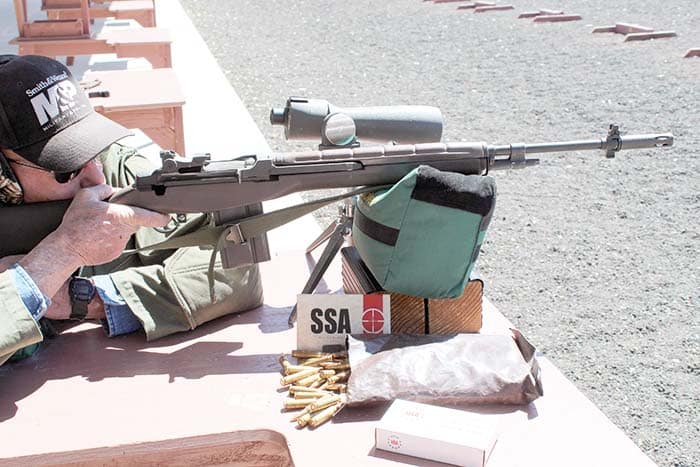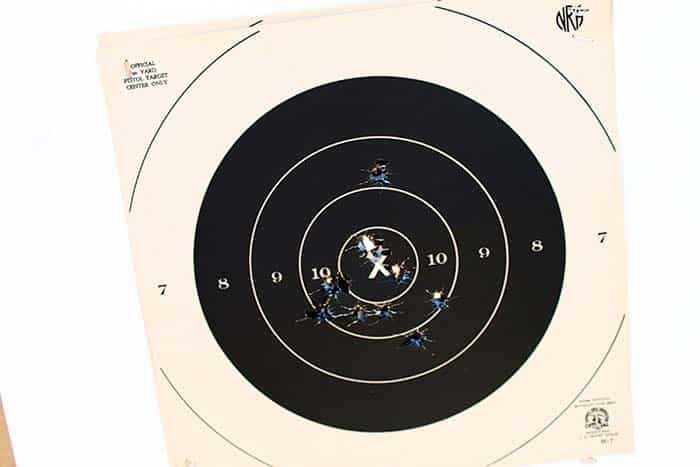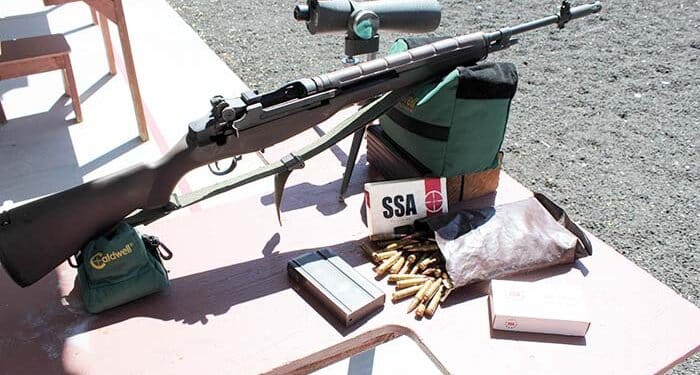By Seth R. Nadel
There is no ammo available where I live. No 9mm, .38 Special, .223 or .308. Occasionally, if you are lucky and happen to be in a store just as the truck arrives, you may get a box or two of whatever brand or bullet weight they just received. But it is unlikely to be the brand and bullet weight you know to be accurate in your pistol or rifle. How can you maintain your skillset with this inaccurate combination? Clearly, you cannot shoot up your hoard of “the good stuff” in practice and have nothing left for your hunt, competition or saving your life!
Shooting skills are perishable skills, just like any other. If you need to practice, how can you measure your abilities when your firearm will not hold your usual group with the ammo you can get?
The author was taught to never present a problem without a possible solution. This solution may not work, but if you do not try you will never know. Here is a solution that may work.

Minimize the Variables
You are dealing with three variable sets:
- Your firearm. In this case, a rifle.
- Your ammo. In this instance, it’s not your known, preferred choice for accuracy.
- And you.
The first thing is to control the controllable inputs. You know that this rifle, with “Brand A” ammo, shoots 1/2 Minute of Angle (1/2 inch at 100 yards) from the bench. How can you maintain your skills?
The author has the good fortune of having three levels of ammo for his preferred rifle: a very limited quantity of Match grade ammo (or “the good stuff”); a fair amount of okay ammo for informal matches “Grade B”; and a goodly supply of bulk-loaded bargain ammo (“Blaster” grade). This is the ammo for position practice—kneeling, sitting and offhand. It is not “bad ammo,” it is just not tuned to this particular rifle.
Take your rifle and the ammo you can get, which we will call “Blaster brand,” and go to the range. Sandbag your rifle to eliminate (or at least minimize) the effect of your shooting skills and shoot a group. Not a 3-shot group, but a 5- or even 10-shot group, with all the skill you can apply. The larger the number of rounds you fire, the greater confidence you can have that the minimum group size you have fired is truly the best this “Blaster brand” ammo can do from your rifle. Let us say you shoot a 2-inch group at 100 yards—certainly not something to be proud of, but the best you can manage with this ammo. Now you have established your accuracy potential with “Blaster brand”—2 inches, or 2 MOA.

Perfect Practice
Since 2 MOA is the best you can do, start your practice session. Since you know the best you can do is 2 inches, you also know that every shot outside of 2 inches from your point of aim is due to your skill (or lack of skill) for that shot or shots. Now you can work on perfecting your skill so your practice targets have 2-inch groups, the maximum accuracy your rifle and ammo can achieve. You can work on things like the position of your rest if you use one, or sling tension, or any of the other possible variables in your hunt/match/self-defense.
Along the way, do not change the zero of your scope or iron sights. After all, you want to keep your rifle (or pistol) set up for the big hunt or competition. If you absolutely must change your zero, be sure to write down exactly how many clicks and in what direction you changed it. Make two copies, one you keep with your rig, the other in a safe place, just in case a gust of wind blows your note away. That way, if your hunt or competition comes up before you can obtain more of your preferred ammo, you know precisely how many clicks in which direction to get back to zero.
And maintain your regular cleaning regimen, so the only thing you change is the ammo (and sights, if you must). If you intend to hunt with a cold, clean bore, make sure you know where that round will hit. Same thing if you will hunt with a cold, dirty bore. In fact, some very elite law enforcement snipers prefer a cold, dirty bore. Meanwhile, a high speed, low drag rifle instructor and graduate of several sniper schools insists students run a dry patch through their bores every morning just before opening fire, as he believes any trace of moisture in the bore causes an errant first shot. Whatever you decide, stick with it. Cold clean, cold dirty, dry patch first—consistency is more important than which method you choose.
All is not lost just because you have a limited supply of “the good stuff.” Dry fire (any modern gun except a .22) as if you are in a match or on a hunt. Same clothing, same holster/sling, etc. Learn more about your target. I asked a client heading for a safari in Africa, “What is minute of Elephant?” He had no idea, and did some research. So your question may be, “What is minute of Whitetail Deer?” You still need to know. And get to the range for some live fire with whatever ammo you can get—and practice!
And when the ammo shortage abates, slowly build up your supply of “the good stuff.” Not hoarding, but a supply to last you through the next “emergency.” When the author has enough for one match, he starts to buy smaller quantities, leaving “some for the other guy/gal.” Otherwise, the shortage will never end.
This article first appeared in Small Arms Review V25N7 (August-September 2021)












